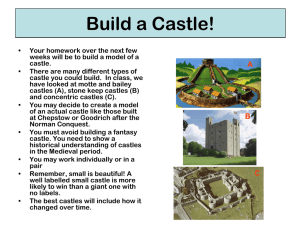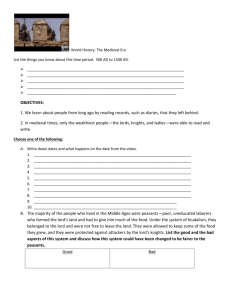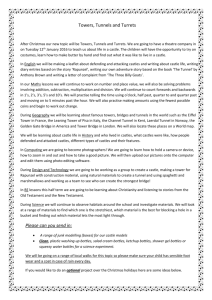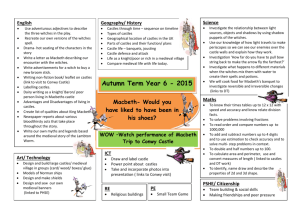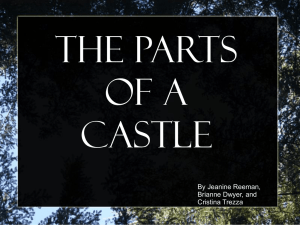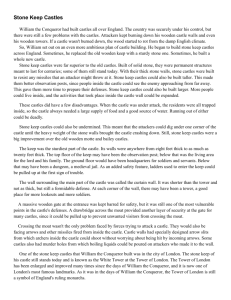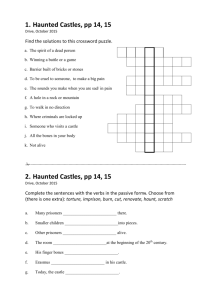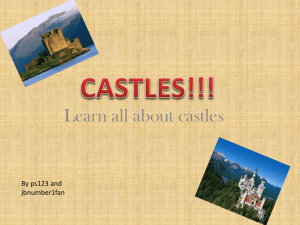Castles of Medieval Europe
advertisement
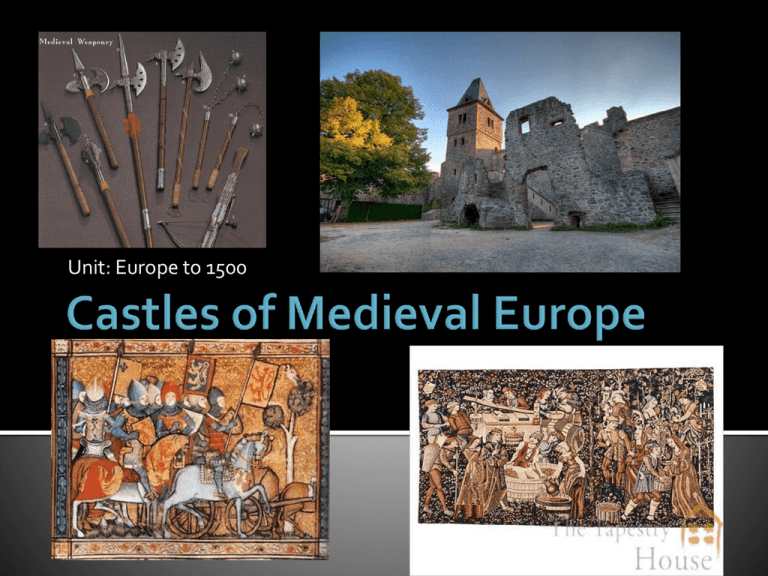
Unit: Europe to 1500 What comes to mind when I say castles? They were not new in the Middle Ages- but built by lords consolidating power and having fortresses to protect their land’s people Some were cold while others were opulent Used for protection, landmark and pride Primary military resources of many countries in medieval Europe. Ended with the advent of artillery during the 1500s. Brought to England by William (Duke of Normandy) in 1066. He used castles (made of wood) to become King of England. Later he used stone. Built castles on hills as basis for the stronghold. Castles became symbols of protection and power for peasants. Lords were granted Castles through sworn allegiance to the King. Sits on the famous “white cliffs” of Dover Strategic because it is the closest point in England to continental Europe. First line of defense. Has concentric stone circles and secret tunnels. Came to Scotland after the Norman invasion of 1066. Built on hills near cliffs and along water and trade routes. Used heavily in the 13th and 14th centuries during the independence wars from England Mainly towered houses and featured stone walls Built in Strathclyde Thick walls made of red sandstone Has a large round keep that is separated from the courtyard by a large ditch Famous from William Wallace laying siege to it in order to take back the castle from the English for 14 months Most were made out of stone and date from the Norman Invasion Mainly occupied by invading lords as strongholds Said that Munster men were awarded stone to build this castle after aiding Robert the Bruce at Bannockburn. Contains the Blarney Stone and gives people the “gift of gab.” Phrase said by Elizabeth I because of Lord Blarney’s penchant for debate Originated from quarreling aristocrats and feuding families Entire cities could be walled in, and wealthy families would build towers for themselves Excellent examples were built by merchant princes in cities like Florence Architecture based on Norman, Islamic and Asian designs Built in Verona Known for its fortified bridge across the River Adige. It divided the castle Made out of red brick and lighter materials to highlights the design Started off as simple towers called donjons that were rectangular Contained all of the rooms for the lords in the stronghold. Only trusted vassals could enter the donjons William the Conqueror had a major influence on castles throughout Europe. Went from basic stone strongholds to elegant chateaus. Allies of the King claimed these fortresses and made palaces of them. Built in Normandy City onto itself; stronghold Tides create a natural barrier Duke of Normandy founded Benedictine abbey there Centuries brought many changes: Carolingian church then gothic structures seen today Reflect the diversity of Germany: North- circular citadels surrounded by water in lowlands. Southlack of symmetry with spires on high ground Diversity based on contact with other cultures surrounding Germany, and where German lords and knights went to fight Began to flourish during the development of feudal Germany Some strongholds were very colorful Built in Hettstedt in the Harz mountains Made to withstand heavy attacks- and an invading army had to pass six doors in order to reach the main castle Eike von Repkow wrote the Sachsenspiegel book of law here Used as a hunting lodge Spain’s location as a peninsula separated from Europe by the Pyrenees Mt. was a major factor in castle building Castillo (basis for English word Castle) strongholds were built to battle the Islamic forces invading Spain after 711 C.E. Symmetrical and colorful in design with rounded towers and masonry based on Islamic design The flat landscape gave towers excellent vantage points to see invading armies Distinct from their use of torre del hominaje- a keep with machicolations at and in-between corners Built in Apulia Octagonal layout on the interior and outside of the main Castle Classic example of Islamic and Western European styles coming together History known for battles against different ethnicities and a great diversity in culture, politics and geography Castles brought by Germans building stone fortifications In Balkans where Ottoman Empire would rule, castle fell into ruin as Christian nobility fled Known for fortified monasteries-to protect the villagers from raids where they would seek refuge in churches Slavs also built castles-Western in style Built in Poland by Duke of Masovia as a stronghold in the 1400s. Boasts great towers and symmetrically laid out on boulders for better defenses Residential wings were not added until 100 years later Built in Transylvania, Romania in the 1200s. Is a fortified church that is encircled by a wall and protected by a water filled moat. Many people laid siege to the fortress, but none succeeded. Sprang up from feuding Warlords Very similar to European Castles- Used for protection and contained large walls, moats, slit windows and used terrain for defense. Create Your Own Castle!!! Sign up for a country and then “build” a castle based on that country. More details will be given to you

